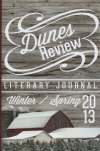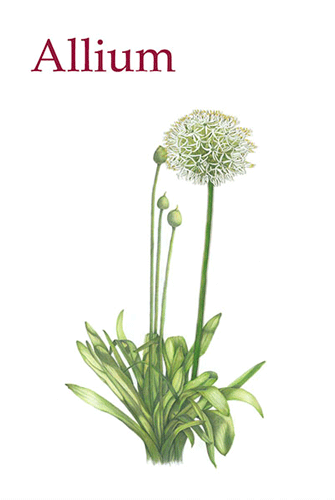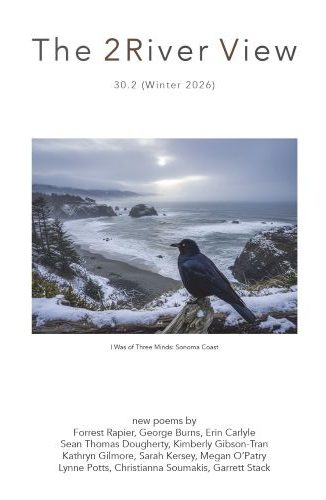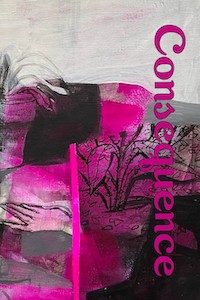It was a surprise to find Dunes Review on the shelf at NewPages. As it happens, I have Volume 1 Number 1 of this publication—dating back to 1997. The mastheads confirm this is one in the same: Founding Editor Anne-Marie Oomen still figures prominently as a submissions reader. Hers is a name that sounds of “home” to me. Home being northern lower Michigan, the launch site of this journal, now published by the Michigan Writers with the Glen Arbor Arts Association and the Beach Bards. Dunes Review has always been and remains Pure Michigan—at least behind the scenes. As for content, that is geographically open.
It was a surprise to find Dunes Review on the shelf at NewPages. As it happens, I have Volume 1 Number 1 of this publication—dating back to 1997. The mastheads confirm this is one in the same: Founding Editor Anne-Marie Oomen still figures prominently as a submissions reader. Hers is a name that sounds of “home” to me. Home being northern lower Michigan, the launch site of this journal, now published by the Michigan Writers with the Glen Arbor Arts Association and the Beach Bards. Dunes Review has always been and remains Pure Michigan—at least behind the scenes. As for content, that is geographically open.
I started with the editor’s notes, but was a bit put off by Jennifer Yeatts’s over-the-top emotional exposition on the journal contents. I think if the writing has something to say, it will say it to me, I don’t need the editor telling me that. “Meh,” I said to her and moved on to Melissa Fournier’s “The Goldfinch,” the 2013 William J. Shaw Memorial Prize for Poetry first place winner. The narrator, finding a dead goldfinch along the road, picks it up. In this tiniest detail, Fournier fills the reader’s mind with imagery: “I caress wingbars, drape her bony feet / over my finger.” Then, in the second stanza of two, relates, “I have done this before—” as the narrator parallels the experience to a human: “I’ve draped / her gripless fingers / over my thumb,” drawing the two into such a tight knot of imagery that by the end of the poem, I literally gasped and choked back a sob. Yeatts had been right, and suddenly, I was comforted that she knew how I felt, had even tried to prepare me.
William J. Shaw was a poet and teacher at Northwestern Michigan College. It is wonderful to see his life memorialized with the awards in this publication, though it would be helpful if there was some mention of who he was and why/how the awards continue to this day. His predilections for poetry were steeped in tradition, the forms he taught in the classroom setting, but he also believed in and encouraged inspiration and experimentation. The award winners have been aptly chosen to represent the prize namesake.
Jim Crockett’s second-place poem “Cadences” explores the cycle of life from song-beats of nature (the grosbeak, the owl, trees), to the work from nature (famers and honeybees), to humans making music—for pleasure and for war, to the press of buildings, and to the final press of death: “The singer, like the earth, / wants nothing left but dust.”
Third place winner “Dry Ice Love Poem” by Kris Kunz shows the breadth of form and style of those selected, hers being a prose poem creating relationships between concrete and surreal imagery, concept and feeling: “I say, certainly the pull to swerve into is universal. Or how about the guardrail? The urge to drive over, just beyond?”
The remainder of the volume is poetry, though Dunes Review does accept fiction and nonfiction. Poems of note for me include Kirk Westphal’s “Bodies of Water,” a first person point of view creation myth. The lines flow beautifully, creating a sensual relationship between Sky and Lake, reader and poem:
My white and grey have been you,
Your grey and blue have been me,
and in between the colors
liquid questions rise and fall
in shapes and crescents of waiting
to hold their answers—
How, then, did we ever live before?
Natalie Solmer’s “Hammock” uses concrete language in such combinations to create the kind of poetic imagery that is hard felt: “I churned with bad moon // while summer ate / its yellow-green.” And Bob Astor in “Swimming Pool Beyond Poverty” has the narrator relate images succinctly detailed but long lasting in the reader’s mind: “everywhere outside / open hands of dusty children // men with leprosy / toothless smiles of old women.” Juxtaposed with the image of a swimmer in a bikini, this one left me with a sense of having “been there,” as if recalling the memory as my own.
The range of poetry for such a slight volume is immense. That there is a single sensibility or type the publication favors can’t be said. Nancy Eimers used excerpts from entries on Google to create a tricky meld of “found” lines in “The Brown Pelican: Unfinished Sentences.” It includes excerpts about birds, cars, organizations, and who knows what, to close on content on the Gulf oil spill and an obituary excerpt from Nancy Cutbirth Small, “environmental activist and teacher.” Like many of the poems I encountered in Dunes Review, the full impact culminates with the final line.
Marcy Branski introduced me to sijo, a Korean form of poetry similar to those of haiku, tanka and the like with line and syllable counts, using narrative or theme, with a problem, a resolution, and a twist. “Sijo by the Dozen” is twelve, three-line poems, each a reflection from daily life encounters and experiences, examined under the poetic form to reveal new insight:
IX
We have nightlights in each room; we get up so often in darkness.
We buy Kleenex in bulk for new allergies and old drippy noses.
But we’re down to a single alarm clock we rarely have to set.
Included in this issue are two poems by Holly Wren-Spaulding, one of the readers for the publication, and Karen Anderson, a long-time area resident and writer. Seeing editors/readers works in a journal never quite seems right to me—smacks of self-publishing—and long-standing local names make me question the selection process. If they solicit, that’s fine, but they should say so, along with the editorial process for general submissions.
I’m thrilled to see Dunes Review has continued on through the years and has not lost its commitment to quality literary content from a wide range of styles and appeals. Being able to pick up a publication like this and find several works that resonate immediately is what will attract readers and writers to the journal. More than that, Dunes Review is an Oh-my-gosh-you-have-to-read-this journal, and it’s that editorial sensibility that has led to its longevity.
[www.michwriters.org/dunesreview]





